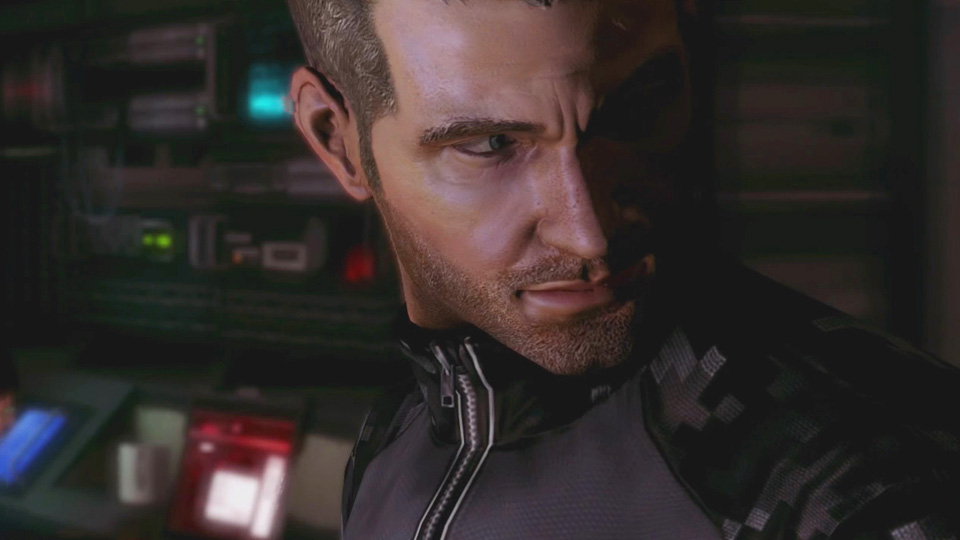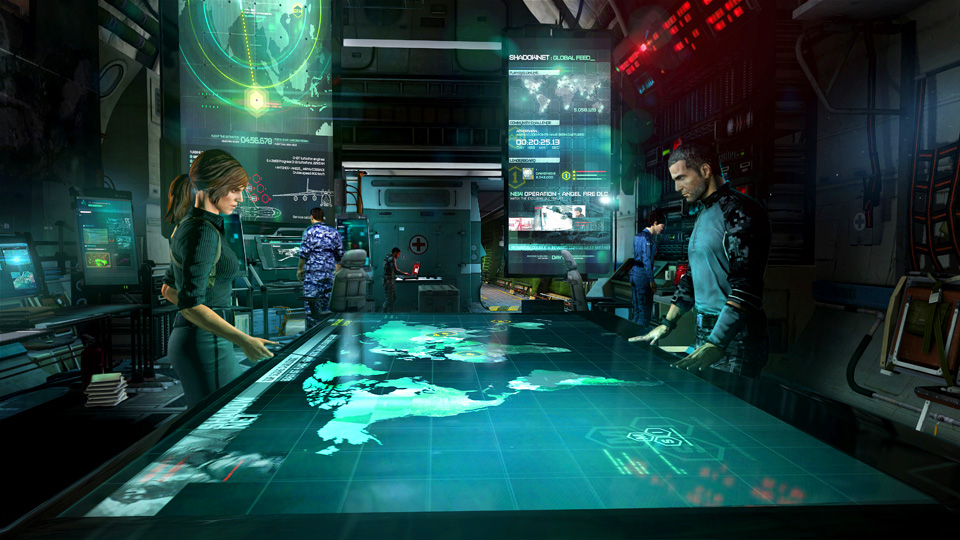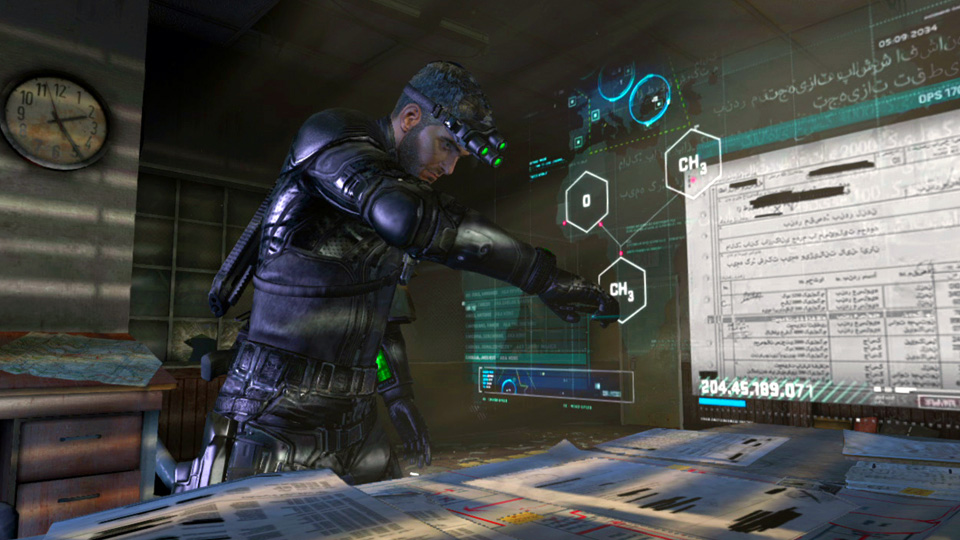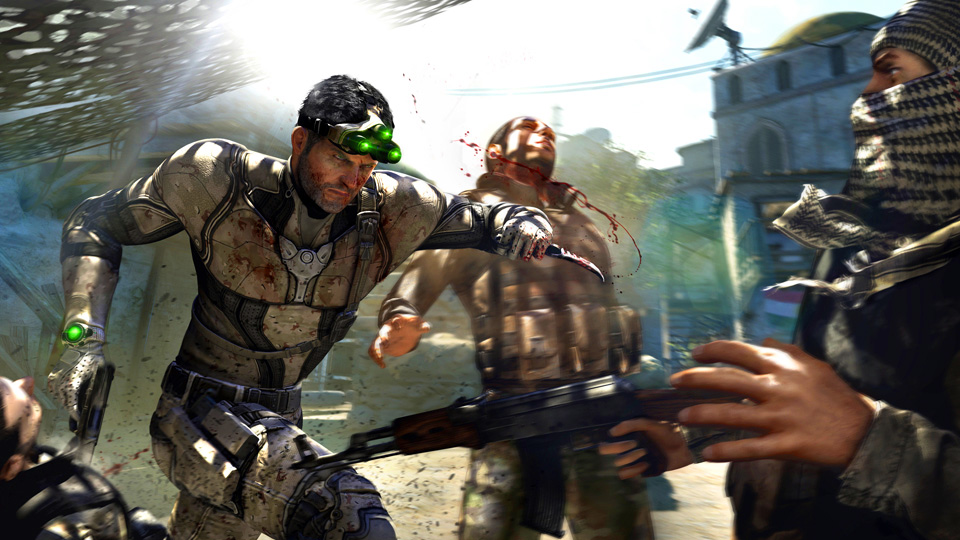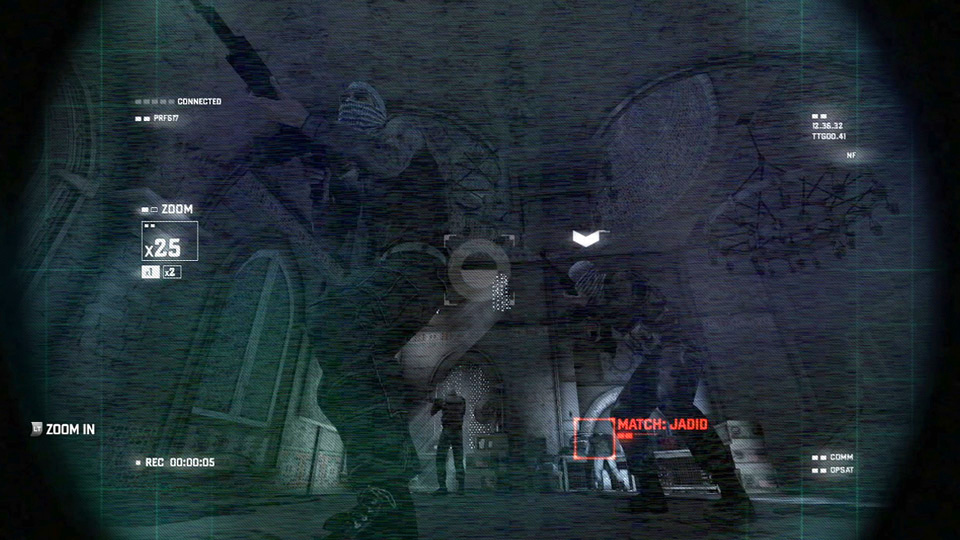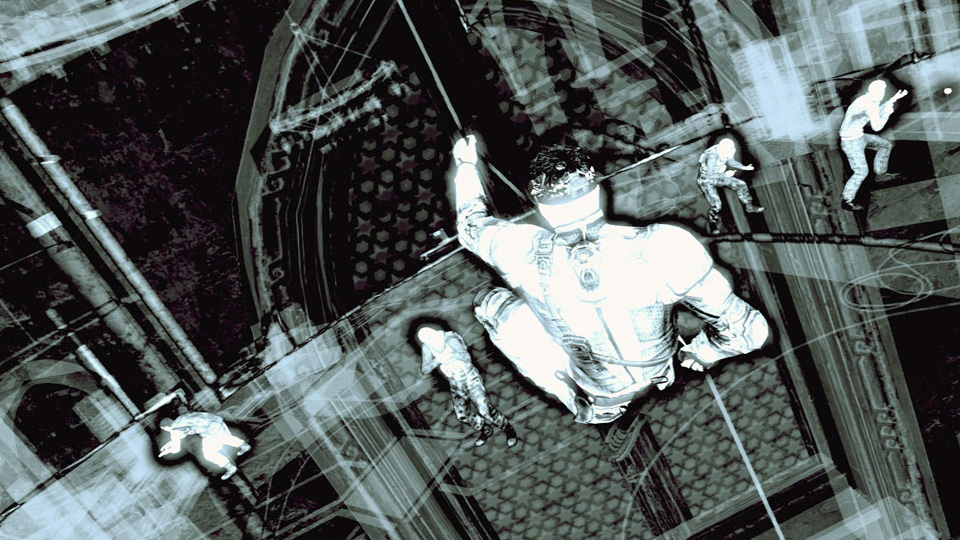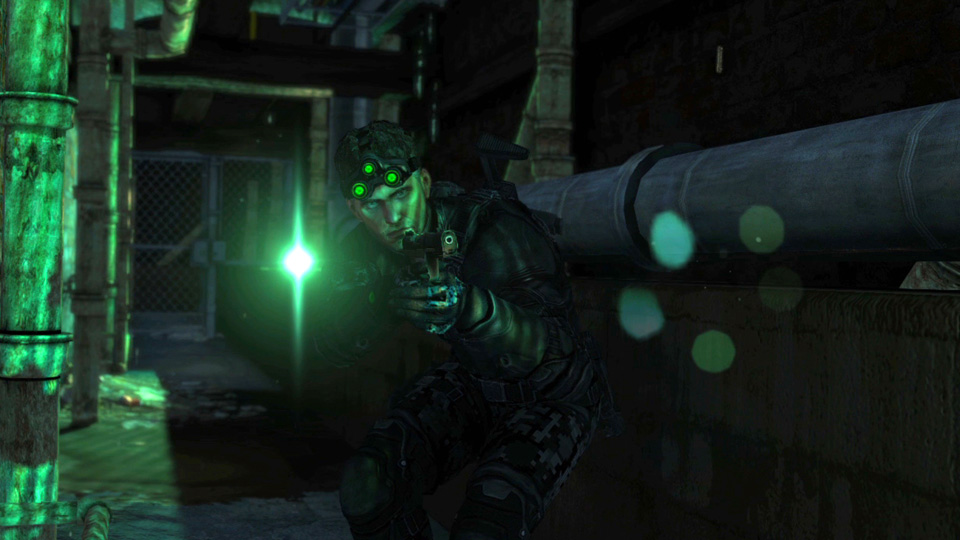 After graduating with a degree in Fine Arts from the University of British Columbia, Scott Lee was prepared to be unemployed for a long, long time. During a Comic-Con that was so long ago that it actually featured comics as the main event, he was even told that he would never make it as a professional artist and that he should consider a new line of work. From there he went on to not only land a job as a professional comic artist, he then later jumped to video games and is now the lead artist for the upcoming Splinter Cell: Blacklist. Not bad for a guy whose second career choice as a Wall Street broker was thwarted by a dislike of math.
After graduating with a degree in Fine Arts from the University of British Columbia, Scott Lee was prepared to be unemployed for a long, long time. During a Comic-Con that was so long ago that it actually featured comics as the main event, he was even told that he would never make it as a professional artist and that he should consider a new line of work. From there he went on to not only land a job as a professional comic artist, he then later jumped to video games and is now the lead artist for the upcoming Splinter Cell: Blacklist. Not bad for a guy whose second career choice as a Wall Street broker was thwarted by a dislike of math.
Lee’s career began at a Comic-Con back in the 90s through an act of good timing and daring. Armed with his recent diploma and a portfolio, Lee decided to try his luck on artist’s row, an area where aspiring artists traditionally go and show off their work in the hopes of catching a break from a publisher. It is a brutally competitive way to get discovered, and of the thousands of hopefuls that have tried to land a job in the industry this way, only a handful have succeeded
He went first to several smaller publishers, hoping that his art would stand out amongst the flood of applicants eagerly pushing their portfolios on anyone that would take a look. One after another they turned him down, some more harshly than others. Dejected, Lee left the publishers behind and wandered the main hall, where he happened upon DC.

The timing was perfect. There were no other potential applicants around and the general traffic was low. On a lark, Lee decided to take a chance and show his work to one of the DC employees manning the booth, something most artists didn’t even bother to try. Within 10 minutes, Lee was speaking to another member of DC.;10 minutes after that he was offered a job as an artist at DC comics.
Napoleon Bonaparte once famously stated that he would rather have a lucky general than a clever one. He would have loved Lee. Of course, luck only takes you so far. Lee was lucky to be in the right place at the right time, but it was talent that created those opportunities. After landing the gig at DC, Lee soon found himself working with legendary comic writer Marv Wolfman on the Teen Titans series. To this day Lee credits Wolfman as a major influence in both his career and his personal artistic style.
Lee had long been an admirer of award winning artist Joe Quesada, who went on to be the first artist named as Marvel’s editor-in-chief, a role he held for 11 years. He stepped down from that position in 2011, but remains the Chief Creative Officer for all of Marvel Entertainment. At the time though, Quesada was still just an artist and Lee was still just a fan, albeit one with a bit of professional experience.
That’s one of the big things with art direction. You need a new hook, you need to do something better than somebody else did, or you want to do it first.
“Amazingly, great artists are utterly selfless,” Lee told Digital Trends. “Their big interest is trying to get everybody else to draw as well as them, which is fairly rare, I’d say, in any profession.”
As the comic boom of the 90s began to ebb and the industry started to cool down, Lee transitioned into doing story boards for TV and designing characters for both television and film. His timing was good and it took off, leading to more work in television than comics. That shift would inadvertently make him the perfect candidate for a job offer that would come from another fortunate encounter, this time at a random diner party.
“I met someone that had worked in the audio department of Radical [Entertainment] who had come over for dinner. It was just a random thing,” Lee recalled. “He found out I was an artist and asked me if I wanted to do some concept art for them. I thought it would be kind of an interesting opportunity – I was big video game fan, I was a big video game player, so I thought ‘hey, this would be really interesting.’”
Today, Radical may best known as the developer of Prototype (which Lee worked on) and its sequel. During Lee’s time though, the studio was still developing for the PS2, churning out titles as varied as Scarface: The World is Yours, Hulk, and The Simpsons: Hit & Run. The experience offered Lee a huge amount of creative flexibility, and it also introduced him to a new industry that he found himself uniquely suited for, and one that he truly enjoyed.

“I found that I really liked working with people, where comics is a very solitary thing,” Lee said. “With the video game company it was nice to have this interaction, it was nice to see something you drew become something a lot bigger than you would have imagined.”
“I loved it, and I never thought about leaving the industry since.”
Game development has grown radically over the years. As the industry began to mature, the people involved were forced to expand their roles and take on jobs that they may not have been trained for. This opened the door for people like Lee, people with artistic training that were willing and able to learn the technical side as well. Lee was again at the right place at the right time.
“I’ve always felt that’s [coming from an art background] really been my unique strength, almost like my little secret super power,” Lee told us. “When I came into the industry – that was back in the PS2 days – a lot of the people in video games, especially in the leadership functions, these guys had grown with the industry. These were people, a lot of whom had learned 3D software on their own. They’d become artists, they weren’t guys who necessarily would have been professional artists otherwise. They learned the software, they had a passion for the games, and they became artists that way.”
Lee quickly settled into the industry and took on the role of an art director. After several projects for Radical culminating on Prototype, he left to join Rockstar Vancouver to work on Max Payne 3, a game often praised for its lush and innovative visual style.

“When you’re in a big studio, the thing you want to do is do something before somebody else does it,” Lee told us. “That’s one of the big things with art direction. You need a new hook, you need to do something better than somebody else did, or you want to do it first. That kind of crazy egotism drives you towards trying to really push the boundaries in regards to what you do.”
That experience led him to Ubisoft Toronto, a new studio formed in 2010 under the Ubisoft umbrella whose first game will be Tom Clancy’s Splinter Cell: Blacklist, which is due out on August 20 for PC, PS3, Xbox 360, and Wii U. Coming in as early as he did, Lee was able to work on the Blacklist project from the conceptual phase on, even before pre-production.
“The opportunity had come up,” Lee said of his move to join the team for Splinter Cell: Blacklist, “and I was a huge Splinter Cell fan, and I a big fan of the fact that Ubisoft as a whole is a very art-driven company.”
From the moment Lee agreed to join the team, the level of expectation was extremely high. The Splinter Cell brand is a proven one, so fans will expect an offering that can live up to the past titles in the series. Plus with the resources of Ubisoft, the game should be able to take full advantage of the aging consoles. As a gamer himself, Lee understands all this and agrees with those expectations.
“Being a fan of video games, buying almost every new game that comes out, I have huge expectations. I’m paying a lot of money for [a] game, I am expecting huge things, especially from big companies that really promise a lot,” Lee said. “From that end, I am psychotically obsessed with the level of detail. I don’t think ‘great’ is even good enough anymore.”

“For us it is this ‘psychotic level of detail’ that we feel is going to make us stand out as a game, especially right now as great games are coming out one after another. I’m hoping that that’s going to be a strength for us. I really love it. I play other games and I come back to our game, and I love playing our game. I think that says a lot.”
When designing Blacklist, the developers were given free rein to alter and redesign the character how they saw fit. There were some limits of course, but in general Ubisoft Toronto was given carte blanche to reimagine the character of Sam Fisher. They even went so far as to part ways with Michael Ironside, the actor that had voiced Sam Fisher for over a decade. Nothing was sacrosanct, but that doesn’t mean the past should be forgotten.
“You cannot ignore the history of Splinter Cell. I loved the Splinter Cell games. There’s no way I’m going to ignore any of it,” Lee said of redeveloping the character. “So the initial influence images that I was drawing from, I went back. I loved Chaos Theory, I loved the way it looked. I thought it was groundbreaking, probably the best looking game I had ever seen in my life at the time. And I went to it and said ‘that’s Sam.’”
“I thought ‘man, what an opportunity to take Sam Fisher and really bring him into today.’”
The team also wanted Fisher to be more well-rounded as well, with “much more of a soul.” In Blacklist, Fisher is in charge of the new Fourth Echelon rather than a loner in the field. This meant the character needed to be more than just an ultra-spy occasionally responding on the radio, he needed to be a leader.
The look of the game has changed as well, and Blacklist will feature more color than fans may be used to seeing, and much of that is due to Lee’s influence. Splinter Cell exists in the shadows, but as Lee told us people in the real world own red cars, so it made sense to include red cars, even if it created a few headaches on the development side.
“Personally I’m not a big fan of stylized single colors or pallets, even though a lot of art directors do like to use that as a hook, making things sepia or desaturated,” Lee said. “Mind you, Splinter Cell is about light and shadow. It generally is very dark, and we want to keep that stuff rich and all that. So we already have our blacks. We already have our bright, bright lights, and our dark dark darks.”
The design process for Splinter Cell: Blacklist is long done, and now it is just down to the polish, that “psychotic attention to detail” Lee referred to. The stakes are high for this game. It’s success or failure could impact the future of the fledgling Ubisoft Toronto studio for years to come, plus it will be among the last major titles Ubisoft will release on this generation of consoles.
Soon all that will be left is the difficult waiting process as Lee and his fellow developers wait to see the results of their years of work.
“We are elated when good things are said, we get super sad when bad things are said. That’s just nature,” Lee told us. “[Blacklist is] going to be worse, because it’s a big project, and for me personally, it is absolutely the best project I’ve ever worked on. So I’m going to take everything very personally this time around.”
Will Lee’s luck hold? We’ll know soon enough.
